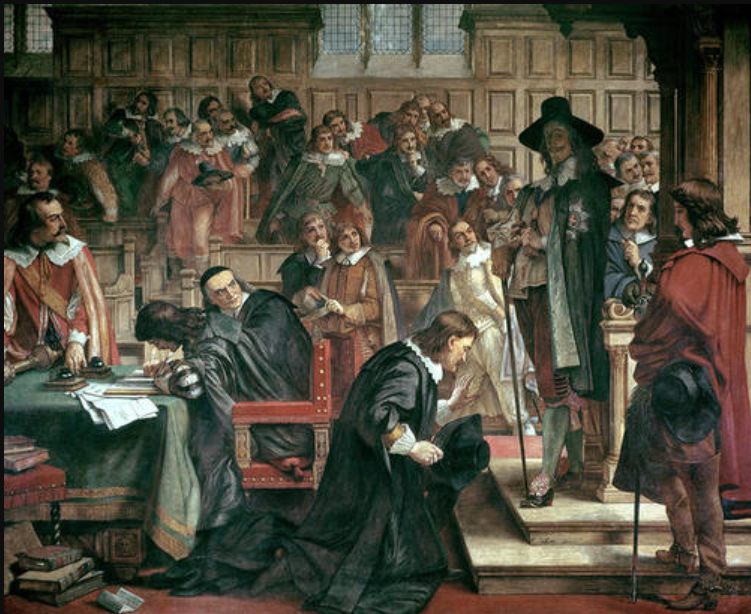Jacobean / Caroline / Interegnum /Carolean Belchamp 1603-1625 - 1625–1649 - Interegnum - 1660–1685
This page covers the period from before 1611 and ends in 1688.
The Carolean era, Charles II, ended with the Glorious Revolution of 1688. It starts with the reign of James I and ends in the deposition of James II. The Civil War years are contained in this period.
The village of Belchamp Walter was involved intimately with the actions of the Royalists and Parliamentarians.
Oliver Raymond served in two of Cromwell's Protectrate Parliaments. It is not known when Oliver was born but he married Francis Harris in 1653, if we assume that he was 30 years old when he married he was born in Bechamp Walter around 1623. John Raymond I (of Belchamp Hall) purchased the estate of Belchamp Walter in 1611 from John Wentworth
The aquisition of Belchamp Manor in 1611 by John Raymond needs more explanation. Due to the lack of extensive historical records for the village for the period prior to 1611 it not known exactly what the sequence of events were. Prior to the Carolean and Jacobean Eras the history of the village had previously been explained by the statement that the manor was officially "held" by the de Veres. This statement totally ignores the fates of the Wentworths and possibly more importantly the period between Conquest and the Elizabethan Era.
The Five - who were members of Parliament and opposers of Charles
The five members of Parliament that Charles I attempted to arrest in the House of Commons were:
- John Hampden (1594–1643)
- Arthur Haselrig (1601–1661)
- Denzil Holles (1599–1680)
- John Pym (1584–1643)
- William Strode (1598–1645)
Thomas Wentworth
Whether the Wentworth here is from the same family that "held" the manor of Belchamp Walter in 1539 to 1611 is not known for sure.
According to the Wikipedia page his father was William Wentworth
John Hampden (1594–1643)
Arthur Haselrig (1601–1661)
Denzil Holles (1599–1680)
John Pym (1584–1643)
William Strode (1598–1645)
